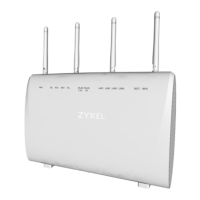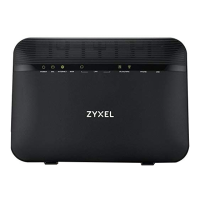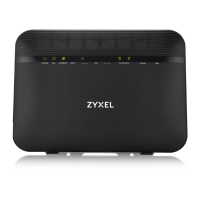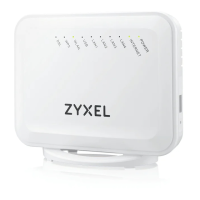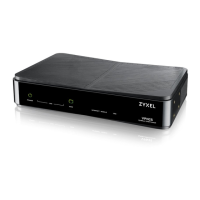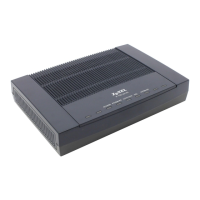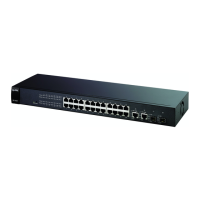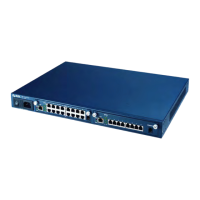Chapter 6 Broadband
VMG3925-B10C/B30C User’s Guide
81
The following table describes the labels in this screen.
Table 8 Network Setting > Broadband > Add New WAN Interface/Edit (Routing Mode)
LABEL DESCRIPTION
General
Active Select Enable or Disable to activate or deactivate the interface.
Name Specify a descriptive name for this connection.
Type Select whether it is an ADSL/VDSL over PTM, ADSL over ATM connection or Ethernet.
Mode Select Routing if your ISP give you one IP address only and you want multiple computers to share
an Internet account.
Encapsulation Select the method of encapsulation used by your ISP from the drop-down list box. This option is
available only when you select Routing in the Mode field.
The choices depend on the connection type you selected. If your connection type is ADSL/VDSL
over PTM, the choices are PPPoE and IPoE. If your connection type is ADSL over ATM, the choices
are PPPoE, PPPoA, IPoE and IPoA. If your connection type is Ethernet, the choices are PPPoE and
IPoE.
IPv4/IPv6 Mode Select IPv4 Only if you want the VMG to run IPv4 only.
Select IPv4 IPv6 DualStack to allow the VMG to run IPv4 and IPv6 at the same time.
Select IPv6 Only if you want the VMG to run IPv6 only.
ATM PVC Configuration (These fields appear when the Type is set to ADSL over ATM.)
VPI The valid range for the VPI is 0 to 255. Enter the VPI assigned to you.
VCI The valid range for the VCI is 32 to 65535 (0 to 31 is reserved for local management of ATM
traffic). Enter the VCI assigned to you.
Encapsulation Select the method of multiplexing used by your ISP from the drop-down list box. Choices are:
• LLC/SNAP-BRIDGING: In LCC encapsulation, bridged PDUs are encapsulated by identifying
the type of the bridged media in the SNAP header.
• VC/MUX: In VC multiplexing, each protocol is carried on a single ATM virtual circuit (VC). To
transport multiple protocols, the VMG needs separate VCs. There is a binding between a VC
and the type of the network protocol carried on the VC. This reduces payload overhead
since there is no need to carry protocol information in each Protocol Data Unit (PDU)
payload.
Service
Category
Select UBR Without PCR for applications that are non-time sensitive, such as e-mail.
Select CBR (Continuous Bit Rate) to specify fixed (always-on) bandwidth for voice or data traffic.
Select Non Realtime VBR (non real-time Variable Bit Rate) for connections that do not require
closely controlled delay and delay variation.
Select Realtime VBR (real-time Variable Bit Rate) for applications with bursty connections that
require closely controlled delay and delay variation.
PPP Information (This is available only when you select PPPoE or PPPoA in the Mode field.)
PPP User Name Enter the user name exactly as your ISP assigned. If assigned a name in the form user@domain
where domain identifies a service name, then enter both components exactly as given.
PPP Password Enter the password associated with the user name above. Select password unmask to show your
entered password in plain text.
PPP Connection
Trigger
Select when to have the VMG establish the PPP connection.
Auto Connect - select this to not let the connection time out.
On Demand - select this to automatically bring up the connection when the VMG receives
packets destined for the Internet.

